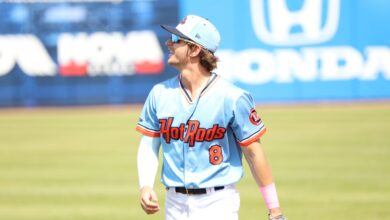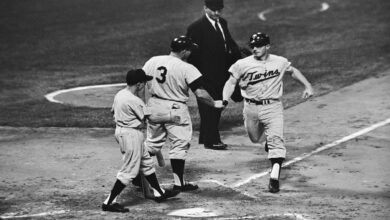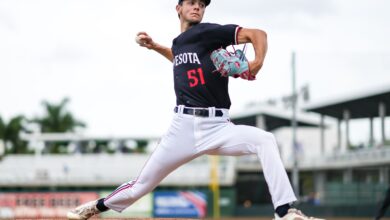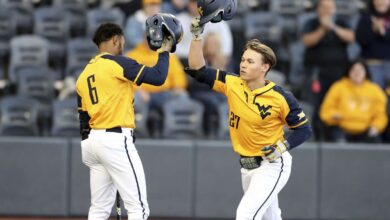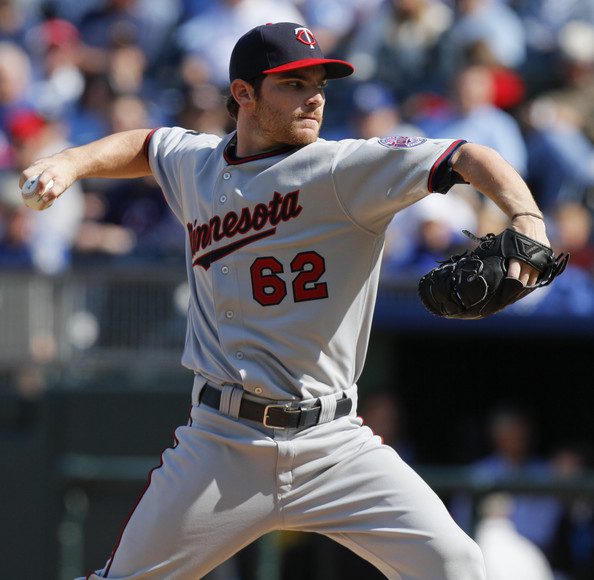
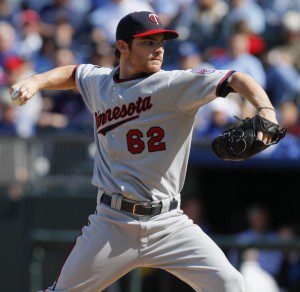
After taking a closer look at the position players who might have an impact with the Twins in the next season or two, this week I’ll take a look at the arms. This group is a little deeper, though it leans toward the bullpen, as there’s a number of guys who could end up getting a shot depending on how things break. Without further adieu:
1. Liam Hendriks: Hendriks is the poster boy for the Twins way of pitching. As a prototypical Twins starter (upper 80s to low 90s fastball, good changepiece, walks next to nobody), the Australian dominated the lower levels to the tune of a 1.74 ERA in a 2010 season split between low and high single-A. The thing is, control pitchers with good off-speed stuff often do just that, only to see their performance fall off facing the more polished hitters at higher levels. Hendriks, to his credit, continued his success at double-A and performed better than his 4.56 triple-A ERA would indicate, posting a 2.29 FIP. It’s reasonable to suggest he was the victim of bad luck and a poor defense during his stint in Rochester, as he posted a .317 (slightly above average) BABIP and a flat-out awful 54.4 percent strand rate (average is around 70-72 percent). He didn’t look great in his brief stint in the majors, however, and that seems to have tempered some (off-base if you ask me) expectations about his ultimate impact in the bigs.
Most prospect evaluators see him as a number-four starter — a guy who could give you 200 innings but isn’t going to dominate. In short, he should fit right in with just about every other right-hander the Twins have thrown in the last 15 years. Hendriks’ lack of an out pitch means his success will always rest with the fickle mistress that is the batted ball. It’s difficult to imagine him striking out more than six or so batters per nine innings, which means, even with pinpoint control, we shouldn’t expect anything close to the video game numbers he put up in the minors. His ultimate upside looks to be the 2008-2009 version of Nick Blackburn, a dependable starter, sure, but hardly an impact guy. The good part of all this is that he’s probably just about reached that upside and should be ready to step in at any point this season. With Scott Baker‘s elbow troubling him, that could happen sooner rather than later.
2. Kyle Waldrop: Waldrop, a first round selection in 2004, has the best chance of any player on this list of making the opening day roster. After a shoulder injury that caused him to miss all of the 2008 season, he moved to the bullpen and has been reasonably successful there, posting ERAs of 2.67 and 3.87 in two full seasons at triple-A. He looked pretty rough during his cup of coffee (11 innings of work) last September, but he’s impressed the Twins brass this spring and is, by most accounts, in a four-way battle with Casey Fien, Jeff Manship and Alex Burnett for the last spot in the major league pen.
Waldrop doesn’t throw hard — he rarely gets over 90 mph — even in relief, but he throws a nasty sinker that generates groundballs out the wazoo (nearly 76 percent of the time in his brief ML stint last year). His control went out the window last September, but that shouldn’t be a concern as he only walked 2.91 batters per nine innings over his seven minor league seasons. If Waldrop doesn’t make the opening day bullpen, we’ll certainly see him at some point later in the year.
3. Carlos Gutierrez: Gutierrez, a first-round pick in 2008, has been consistently frustrating. After struggling as a starter, he moved to the pen, but never really took off there like expected. Everybody raves about his sinker, a sick low-to-mid-90s offering, but he’s never put up the numbers to match the reviews. He struggles with control (4.48 walks per nine innings last season) and doesn’t seem to have secondary offerings that match the sinker. Gutierrez, like Hendriks (and Kyle Gibson), may have been the victim of Rochester’s shoddy defense as he posted a FIP of 3.42, well below his 4.62 ERA and suffered through a strand rate of 58 percent.
While the numbers have never quite matched the production, it’s hard to see Gutierrez not getting a chance at some point this season. Many people still see him as the closer of the future.
4. Deolis Guerra: Guerra, the last remaining piece from the botch-job that was the Johan Santana trade, had been written off by most by last season. Rushed by the Mets, he reached high-A ball before his 18th birthday, but never put up dominating numbers. He’s big and physical (6′-5″ and 245 pounds) but rarely pitched off his fastball as a starter. Chances of him contributing at the major league level looked miniscule at midseason. However, a move to the bullpen seems to have resurrected his career. His fastball ticked up and combined with his already formidable change-up en route to a 65-13 K-BB ratio and a .191 opponent average as a reliever.
Guerra will begin the year at triple-A Rochester but if he can prove if his second-half last season was for real, we could see him in the bigs in September (if not earlier) and up there to stay next season.
5. Alex Wimmers: Wimmers is a bit of a cheat here as he’s never pitched above high-A, but I wanted to throw a bit more upside on the list. He’ll probably start the season in Fort Myers again, though finishing the year in triple-A isn’t totally out of the question.
Wimmer was the Twins’ first selection in the 2010 draft, and he pitched like it after signing. In four starts with the Fort Myers Miracle, his ERA sat at a miniscule 0.57 and many expected the polished Ohio St. product to rocket through the system like Kyle Gibson the year before. Then things got wild. Wimmers left his first start after walking the first six batters and didn’t pitch in a meaningful game for another three months. He performed pretty well upon his return, even throwing a no-hitter in his final start of the year. His velocity was down a bit, but most expect it to return to the low 90s. What he needs now is innings (he only got 40 last season), and if he shows a return to form, he could move pretty quickly through the system.
A couple more to keep an eye on:
Lester Oliveros: Oliveros was acquired for Delmon Young last season. He throws really hard, but both his command and secondary stuff are lacking. He seems to have been beat out for the pen this spring but should surface at some point during the year.
Scott Diamond: A left-handed strike-thrower exchanged for Billy Bullock, the former Brave doesn’t offer much upside. He’s a fifth starter on a good day.


